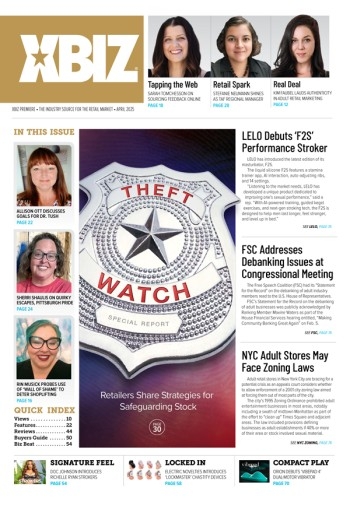So, what exactly is beauty? Last week in Part 1 we discussed the contributions of geometric simplicity, specifically as it applies to symmetry and the golden rectangle. We discovered that patterns which are easily recognizable throughout the natural world, and thus easily deciphered, tend to be more aesthetically pleasing to the human eye.
This week you'll find out that nature's contributions to our perception of beauty don't end there. Environmental factors have clearly had a strong influence upon the qualities that we associate with beauty. Following, we'll explore the implications of instinctual motives to survive and to prolong the existence of our species through reproduction. These concepts may strike you as being somewhat far-fetched, however the fact that people don't struggle for survival in the same way that they used to doesn't imply that they aren't still equipped to do so. Believe it or not, such instinctual motives still exercise a profound effect over our modern concepts of beauty, and it is by understanding these concepts that we as adult Webmasters can learn to provide higher quality products to our customers.
Civilized culture has only recently surfaced in the grand scheme of things. To put this statement into perspective, our oldest civilizations are only a few thousand years old. For centuries our ancestors hunted game and gathered food as a means to survival. Similar to the manner in which our bodies have evolved over countless centuries in order to adapt and survive, so did we adapt psychologically. It is important to women to be beautiful and to men to be strong and productive because concepts of masculinity and femininity have been deeply ingrained within the human psyche. Thus, the emotions and preferences that are commonly written off as typical stereotypes in our modern society are actually the product of millions of years of evolution.1
One theory suggesting a reason why we are capable of perceiving beauty in the surrounding world is based upon evolutionary biology and evolutionary psychology. Its simplest explanation sounds something like this: beauty has a simple biological purpose: to attract similar creatures for sexual purposes.2 Once upon a time, the biological purpose of sex was not to have fun, but to reproduce. All creatures, be they birds, bees, fish, or trees, need to produce offspring in order to carry on the legacy of their species (and only humans and dolphins have sex for pleasure). Brilliant colors are almost exclusively linked with sexual reproduction in the natural world. Male animals consistently display brilliant colors in order to attract a mate. Bright colors make flowers more visible to insects and animals in order to assist in the spread of pollen and seeds. Bright colors, one of the most traditionally recognized aspects of beautiful objects, function to serve multiple important purposes in the natural world.
Humans, as do many animals and insects, consider flowers beautiful or at least worthy of attention. This predisposition towards the bright colors and sweet fragrances omitted by flowers seems to have evolved in response to one of many key functions that flowers perform. Flowers use signals such as color and scent to provide information about the type of plant they represent. Our appreciation for beautiful flowers may very well be an instinctual clue, an adaptive response to the colorful cues offered by our surrounding environment which originally assisted primitive species to find nutritious sources of food.2 Flowers can effectively reveal a great deal of information about the ripeness of a plant's fruit or the toxins residing within a plant's leaves.
Additionally, flowers represent the reproductive part of a plant. Plants utilize their flowers to attract animals and insects that assist in the reproductive process by spreading potent seeds and pollen. Thus, flowers are often most colorful when they are mature and ready for pollination. Flowers help animals and insects alike to visually identify specific plants in their environment. Additionally, contrasting colors within a single flower effectively heighten its visibility to further assist insects and animals in locating it.
The theory that our modern concepts of beauty stem from an instinctual motive to survive and to prolong the existence of our species through reproduction is further supported by the conflicts that beauty has been known to provoke amongst members of the opposite sex. Even in much of the animal world there is constant conflict between male animals over sexual access to "beautiful" females.
As further support, many of the deities worshipped by ancient cultures were associated with beauty and war simultaneously. According to Greek mythology the goddess of love, Aphrodite, and the god of war, Ares, acted as lovers. According to Babylonian mythology the goddess of love and sexuality, Ishtar, also exhibited many warlike qualities.3 We find associations between war and beauty in Aztec mythology as well. The Aztec goddess of love symbolized beauty, flames, and the spirits of the departed, as she was also the patron goddess of warriors. "She followed the young men into battle having intercourse with them, a butterfly in her lips, at the moment of their deaths."3
Joke: Chicks with Guns: An Underdeveloped Niche?
The Aztecs chose the geometrically pleasing butterfly to represent their goddess of beauty. The extraordinary form, symmetry, and color exhibited by the butterfly have caused it to become a symbol commonly used when representing beauty found in nature. Not only is this an excellent example of the associations commonly made between beauty and conflict, it also illustrates a human tendency to find symmetric, geometrically simple objects most beautiful, as discussed in detail in Part 1 of this series. The strong associations between beauty and war exemplified throughout history expose an emotional truth; the magnetism of female beauty is often associated with the conflicts that arise amongst men.
Not only has the concept of beauty assisted in guiding animals through nourishment and reproduction, beauty as an evolutionary tool is demonstrated when evaluating landscapes as well. Envision a beautiful landscape for a moment. Perhaps you imagine a sparsely wooded forest or gushing waterfalls. Why do you suppose you chose to imagine the scenery that you've just imagined? Attributed to the intense pressures to select an appropriate living environment that were present during premature human evolution, there exists an instinctive human preference towards landscapes that encompass visual elements resembling those of thinly forested tropical grasslands. Contemporary humans express a speedy and subconscious, affective response to the visual properties of a landscape upon its initial encounter.
Thus, the landscapes people tend to prefer are those that exhibit qualities that support environmental conditions favorable for survival, such as an abundance of resources like water or a minimal threat from predators.4 More specifically, people prefer locations that combine resources and safe refuge. Doesn't that sound something like a Website offering popup-free thumbnail gallery listings?
In summary, the reasons we find things beautiful are not as straightforward as they sometimes seem. The environmental factors previously discussed have strongly influenced the qualities that we associate with beauty. Even those who are very in touch with their feelings and have a deep understanding of their preferences are influenced by an internal drive. We can attribute internal motivations towards various "beautiful" qualities to personal preferences, but in order to cater toward these preferences it is important to consider why they exist. Universally beautiful objects have attributes such as inviting colors and dominant features that are recognized as favorable by all living creatures, qualities with which everyone can relate. In the end, the biological purpose of beauty is simply to attract living creatures towards beneficial parts of their respective environments. In today's world, a world where images of beauty can be found in virtually every sphere of modern life, the biological purpose of beauty is often lost. Instead of considering social trends when deciding upon a beautiful display, concentrate on making your display a genuine source of attraction. Make your work attractive to users in the most primitive sense and it will continue to appeal to their senses for as long as the seemingly endless series of beauty trends continues to cycle.
Be sure to check in next week for our third and final installment here at XBiz. Not only are we about to explore the concepts of perspective and motion as they relate to beauty, we'll apply each and every one of the concepts discussed throughout the course of this three part series to the process of creating beautiful Web design and graphics.
Amanda Grimm has worked in the adult industry for three years. She specializes in international Web design and usability testing. Amanda holds a BS in Business Information Systems, and can be reached at Amanda@AdultWebmasterConsultants.com and https://www.adultwebmasterconsultants.com/
1 https://www.beautyworlds.com/
2 https://www.beautyworlds.com/theoryofbeauty.htm
3 https://www.beautyworlds.com/aztecs.html
4 https://www.shef.ac.uk/assem/5/chamberl.htm





